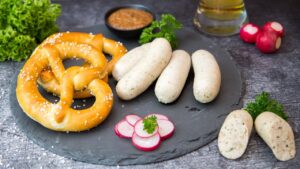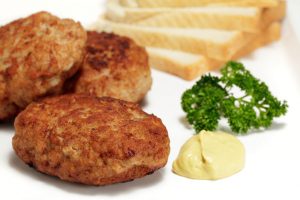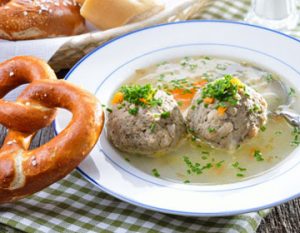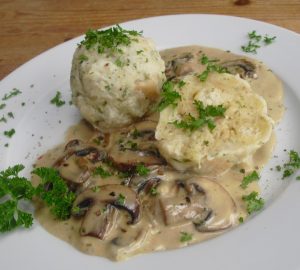Germany is renowned for its rich culinary heritage, and one of its most cherished contributions is the Weißwurst. This traditional Bavarian white sausage, a staple in Munich and a highlight of Oktoberfest, has been savored since the 19th century. This article will guide you through the process of making Weißwurst at home, including tips on … [Read more...]
Fleischpflanzerl – Bavarian Specialty
Fleischpflanzerl, also known as Buletten, or Frikadellen, are made of minced meat mixed with softened Brötchen (bread rolls) and eggs. Served hot or cold, with a pickle, with or without mustard, eaten plain or on a Schrippe (another word for roll) — doesn't matter, as long as it tastes like Mutti's. Tip: The "mushier" the softened bread, the … [Read more...]
Leberknödelsuppe – German Liver Dumpling Soup
Leberknödelsuppe is a traditional German dish, particularly popular in Bavaria. It is a liver dumpling soup made of beef liver, bread, eggs, and parsley cooked in beef broth. In the Palatinate, Leberknödel are often served with Sauerkraut and mashed potatoes. Ingredients: 2 stale bread rolls 3/4 cup lukewarm milk 2 eggs, beaten 1 onion, … [Read more...]
Semmelknödel mit Pilzen – German Bread Dumplings with Mushrooms
Ingredients: For the dumplings: 200 g dry white bread or 6 stale rolls (Brötchen) 1 glass lukewarm milk salt freshly ground black pepper freshly ground nutmeg 1 onion 1/2 bunch flat-leaf parsley 1 tbsp butter 2-3 eggs flour or breadcrumbs For the mushrooms: 600 g fresh champignons or chanterelles 1/2 … [Read more...]



